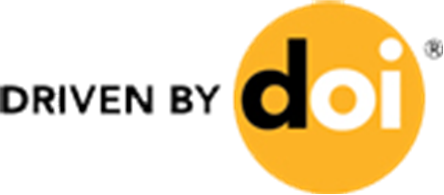Design and Development of Standard Calibrator for Horizontal Sprit Level
การออกแบบและพัฒนาเครื่องมือสอบเทียบมาตรฐานสำหรับเครื่องวัดระนาบชนิดมีระดับน้ำ
Abstract
งานวิจัยนี้มีวัตถุประสงค์เพื่อออกแบบและพัฒนาเครื่องมือมาตรฐานสำหรับใช้สอบเทียบเครื่องมือวัดระนาบชนิดมีระดับน้ำที่มีประสิทธิภาพในการใช้งานและใช้ขอรับการรับรองความสามารถห้องปฏิบัติการ ISO/IEC 17025 : 2017 ในขอบข่ายการสอบเทียบระดับน้ำได้ งานวิจัยเริ่มต้นจากการเก็บรวบรวมความต้องการการใช้งานเครื่องมือสอบเทียบฯ ของบุคลากรในห้องปฏิบัติการสอบเทียบจำนวน 30 คน โดยการสัมภาษณ์และการตอบแบบสอบถาม เทคนิคการกระจายหน้าที่เชิงคุณภาพ (QFD) ได้ถูกนำมาประยุกต์เพื่อถ่ายทอดความต้องการสู่ข้อกำหนดเชิงเทคนิคของเครื่องมือสอบเทียบฯ ขั้นตอนต่อมาได้ออกแบบแนวคิดทางเลือกของเครื่องมือสอบเทียบฯ จำนวน 3 แนวคิดและได้คัดเลือกแนวคิดที่ดีที่สุดด้วยเทคนิคการให้คะแนนแนวคิด (Concept Scoring) จากนั้นได้ปรับปรุงแนวคิดสุดท้ายตามคำแนะนำจากผู้เชี่ยวชาญด้านการสอบเทียบและด้านวิศวกรรม ก่อนนำมาสร้างเป็นเครื่องมือสอบเทียบต้นแบบ(Prototype) มีชื่อเรียกว่า Precision Bar การทดสอบเปรียบเทียบประสิทธิภาพระหว่างเครื่องมือสอบเทียบฯ เก่าที่เคยใช้งานอยู่กับเครื่องมือสอบเทียบฯ ที่พัฒนาขึ้นในการศึกษาครั้งนี้ ได้ผลดังนี้ (1) เวลาที่ใช้ในการสอบเทียบลดลงจากเดิม 120 นาที เป็น 52 นาที คิดเป็นลดลง 57%, (2) สามารถสอบเทียบระดับน้ำได้ตามมาตรฐาน JIS B 7510 : 1993 เหมือนกัน (3) น้ำหนักของเครื่องมือสอบเทียบฯ ลดลงจากเดิม 25 กิโลกรัม เป็น 2 กิโลกรัม (4) เครื่องมือสอบเทียบฯ สามารถปรับพื้นเอียงเล็กสุด 1 ช่องสเกล 0.02 มิลลิเมตร/เมตร ได้ และ (5) กำไรต่อการสอบเทียบระดับน้ำเพิ่มขึ้นจาก 200 บาทเป็น 600 บาท นอกจากนี้เครื่องมือสอบเทียบใหม่ยังมีความสามารถในการสอบเทียบได้ทัดเทียมกับเครื่องมือสอบเทียบมาตรฐานที่นำเข้าจากต่างประเทศและมีราคาถูกกว่าถึง 110,000 บาท หรือคิดเป็นราคาที่ลดลง 73%
The objective of this research is to design and develop a standard calibrator for a horizontal spirit level that is efficient and can be used to obtain the laboratory accreditation ISO/IEC17025: 2017 in the scope of spirit level calibration. The research began with collecting needs for using the calibrator of 30 people in the calibration laboratory by face-to-face interviews and questionnaires. Quality Function Deployment (QFD) was then applied to translate these needs into technical requirements of the calibrator. The next step was to generate 3 design concepts of the calibrator, and the most prominent one was then selected using the concept scoring technique. Subsequently, the selected design concept was finally revised based on recommendations from calibration and engineering experts before developing the prototype, which was called the Precision Bar. A comparative test of performance between the previously used calibrator and the one developed in this study showed the following results; (1) Calibration time has been reduced from 120 minutes to 52 minutes, (2) Spirit levels can be calibrated according to the same JIS B 7510: 1993 standard, (3)The weight of the calibrator has been reduced from 25 kg to only 2 kg, (4) The floor slope of the calibrator can be adjusted as small as 0.02 mm/m per one scale, and (5) Profit from calibration service increased from 200 baht to 600 baht. Moreover, the new calibrator also has the same calibration capability as the standard calibrator imported from abroad, and its cost was 110,000 baht lower, or 73% price reduction.
Keywords
[1] A. Chareansuk, and S. Sawatarree, Introduction of metrology by National Institute of Metrology (Thailand), 1st Ed., National Institute of Metrology (Thailand), Pathumthani, Thailand, 2005. (in Thai)
[2] W. Kongsakul, C. Sukmak, and M. Charoenkun, Design and development of smart dial gauge tester, The conference of Industrial Engineering Network (IE Network 2019), Proceeding, 2019, 562-566. (in Thai)
[3] W. Kongsakul, Design and development of standard instrument for calibration steel ruler with according to reference method JIS B 7516: 2005, The conference of Industrial Engineering Network (IE Network 2024), Proceeding, 2024, 8-13. (in Thai)
[4] https://www.cal-laboratoty.com/Article/Why calibrate instrument- How important / (Accessed on 7 January 2025) (in Thai)
[5] https://www.cib-buu.com/17454134 /About us (Accessed on 16 March 2024)
[6] TISI 17025 – 2561, Laboratory Accreditation, Thai Industrial Standards Institute (TISI), 2017. (in Thai)
[7] Japanese Standard Association, JIS Handbook Mechanical Instrumentation JIS B 7510: 1993, 2012.
[8] K.T. Ulrich, and S.D. Eppinger, Product design and development, 5th Ed., McGraw-Hill, New York, USA 2012.
[9] M. Sasananan, Product design for creating innovative and reverse engineering, 2nd Ed., Thammasat University Press, Bangkok, Thailand, 2007. (in Thai)
[10] L. Cohen, Quality function deployment how to make QFD work for you, Addison-Wesley, MA, USA, 1995.
[11] T. Pirom, S. Rawangwong, A. Thongkamkaew and C. Hutyee, Design and development product the kindergarten classroom furniture with rubber wood using quality function deployment, The journal of Industrial Technology, 2019, 15(3), 77-92. (in Thai)
[12] S. Jitman, T. Chaibankud, P. Jamsai, B. Ariyajunya, R. Sukhasem and R. Chantrasa, Development of bamboo tube sawing machine by ergonomics and quality function deployment, Engineering Journal Chiang Mai University, 2021, 28(2), 100-115. (in Thai)
[13] R. Chantrasa, T. Pedyod, C. Phontree and S. Chantasee, Development of garden waste shredder machine using quality function deployment, The Conference of Industrial Engineering Network (IE Network 2023), Proceeding, 2023, 299-306. (in Thai)
[14] W. Kongsagul, Design and development of fixture for calibration of torque screwdriver in accordance with ISO 6789: 2003(E) using quality function deployment technique, Thai Industrial Engineering Network Journal, 2018, 4(1), 24-33. (in Thai)
[15] JCGM100: 2008, Guide to the expression of uncertainty in measurement, Joint Committee for Guides in Metrology, 2008.
[16] ISO/IEC 17043: 2010, General Requirement for Proficiency Testing, International Organization for Standardization, 2010.
DOI: 10.14416/j.ind.tech.2025.08.005
Refbacks
- There are currently no refbacks.






